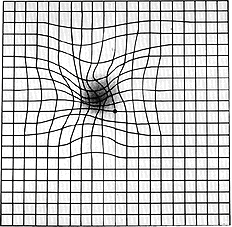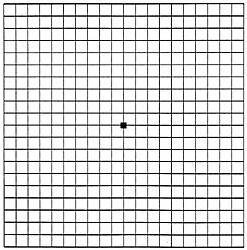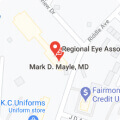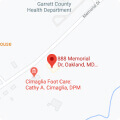What is Macular Degeneration?
Macular degeneration, or age-related macular degeneration (ARMD or AMD), is a disease of the center part of the retina called the macula. The macula controls our central vision and enables us to see fine details clearly. It is what allows us to read, drive a car, and recognize faces or colors.

The specific factors that cause macular degeneration are not specifically known; however, as people get older, the chances for developing the eye disease increases. In fact, ARMD is the leading cause of blindness for Americans over the age of 60.
Macular degeneration usually affects both eyes; however, the severity of the disease can differ greatly between the two eyes. In some cases, ARMD can advance so slowly that people notice little change in their vision. In others, the disease can progress so fast that it can lead to a loss in vision in both eyes. With this in mind, macular degeneration occurs in two forms: dry and wet.
Types of Macular Degeneration
What are Common Symptoms of Macular Degeneration?
Neither dry nor wet macular degeneration cause any eye pain.
Symptoms of dry ARMD progress gradually and usually do not end in total blindness. Blurred vision is the first symptom that you may start to notice. Tasks such as driving, reading and even recognizing people’s faces may start to because more difficult as your macular degeneration worsens. In the advance stages, a large area of grey blocking your central vision may start to develop. People can often have completely obscured central vision, but still have clear peripheral vision.
The same symptoms mentioned above are also encountered in wet macular degeneration. In addition, the most common symptom in wet ARMD is straight lines appearing crooked or wavy. This occurs in wet ARMD because blood vessels under the macula begin to leak and lift the macula, causing a distortion in your vision.

As viewed by a person with ARMD

Healthy vision
Your doctor may give you something called an Amsler Grid to monitor the progression of your macular degeneration. This grid is a pattern that resembles a checkerboard. You will be asked to cover one eye and stare at a black dot in the center. You may notice that the straight lines in the pattern appear wavy or even missing. This distortion in the Amsler grid is abnormal and may indicate the beginning of wet macular degeneration.

How an Amsler grid looks to a person with ARMD

How an Amsler grid looks to a person with healthy vision
Can Macular Degeneration be Cured?
There is no permanent cure for either dry or wet macular degeneration. However, there are treatment therapies that can delay the progression of ARMD.
Living With Macular Degeneration
The idea of life with age related macular degeneration can be upsetting upon first diagnosis due to the fact that there is no cure for this disease. Despite the danger of this disease, patients rarely lose all of their vision from macular degeneration. In most cases poor central vision is a problem but functioning with normal daily tasks is possible. If you feel that you may be experiencing any of the warning signs of macular degeneration mentioned above, our office is willing to offer you not only medical consultation but also emotional support. Our doctors will discuss your options and attempt to prevent permanent vision loss.
*As with any surgical procedure there are risks along with benefits. It is important to discuss your surgical procedure with your surgeon to fully understand the risks and benefits.






